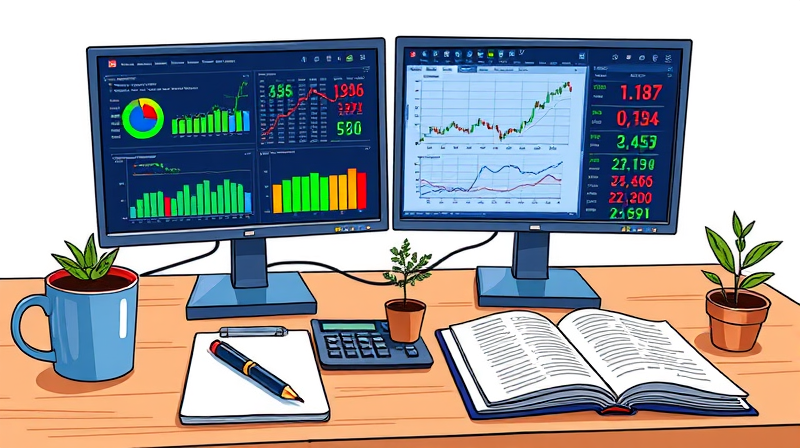
Dividend investing can transform your portfolio by generating reliable income streams. Rather than relying solely on capital gains, you tap into regular payouts from established companies. This approach appeals to both seasoned investors seeking stability and beginners aiming to build passive earnings over time.
At its core, dividend investing involves purchasing stocks or funds that distribute a portion of corporate earnings to shareholders, usually on a quarterly basis. These payments can be issued in cash or reinvested through Dividend Reinvestment Plans (DRIPs), boosting your holdings automatically.
Dividends represent a share of profits and serve as a clear signal of corporate strength. Far from being free money from the market, they reflect underlying financial health and a board’s commitment to rewarding investors.
One of the primary attractions is the steady stream of passive income that dividends provide. These periodic payouts can supplement salaries, fund retirement living expenses, or be plowed back into additional shares for growth.
Dividend-paying companies—especially dividend aristocrats with 25-plus years of increases—tend to exhibit lower volatility than high-growth peers. Over the long haul, dividends have accounted for roughly 32% of the S&P 500’s total return since 1926, underscoring their historical impact.
When assessing dividend candidates, three primary metrics guide your decisions:
Coupling these metrics with qualitative analysis of management, industry position, and cash flow gives a well-rounded view of each opportunity.
Begin by screening for companies with manageable debt levels and stable earnings. Look for businesses operating in resilient sectors such as utilities, consumer staples, healthcare, and financial services. Aim to spread your investments across multiple industries to weather sector-specific downturns.
Prioritize firms with track records of uninterrupted or growing dividend payments rather than chasing the highest yields. Over time, reinvesting dividends through DRIPs can amplify gains, harnessing compounding returns over decades and accelerating wealth accumulation.
Regular portfolio reviews—at least semiannually—are critical. Monitor changes to payout ratios, shifting business strategies, or economic forces that could pressure dividends. Adjust allocations as necessary to maintain quality and income objectives.
Consider investing $10,000 in Coca-Cola at $63 per share. With a quarterly payout of $0.485 per share, you receive about $300 annually, excluding any stock appreciation or reinvestments. This modest example underscores how even middle-income earners can build meaningful income streams over time.
Alternatively, a dividend ETF yielding 5% transforms a $10,000 investment into roughly $500 of annual income. Combined with potential capital growth and reinvestment, this approach delivers a compelling blend of yield and diversification.
Dividend tax treatment varies significantly by jurisdiction. In the U.S., qualified dividends enjoy rates of 0%, 15%, or 20% depending on income brackets. Other countries, like Hong Kong or Greece, may levy minimal or zero taxes on dividend payouts.
Understanding your local tax code and leveraging tax-advantaged accounts when possible can boost after-tax returns. Consult with a financial professional to navigate complexities and optimize your dividend strategy.
Even well-chosen dividend stocks carry risks. Companies can enact dividend cuts during economic downturns, erasing projected income. Overconcentration in high-yield sectors also raises vulnerability to regulatory shifts or commodity cycles.
Lastly, focusing exclusively on dividend yield may lead to missed opportunities in fast-growing, non-dividend equities. Balancing income and growth goals ensures your portfolio remains dynamic and resilient.
To launch your dividend journey, open a brokerage account and define your objectives: immediate income versus long-term growth. Select a mix of individual stocks and dividend-focused funds that align with your risk tolerance and tax situation.
Commit to ongoing education and leverage analytical tools—such as payout ratio screens or dividend discount models—to refine your selections. Over time, you’ll gain confidence and witness the power of disciplined, income-driven investing.
Investors increasingly gravitates toward low-cost dividend ETFs for transparent, diversified exposure. Online brokerages now offer automated reinvestment features and instant portfolio snapshots, streamlining management.
Advanced platforms incorporate dividend calendars, yield analysis, and aristocrat lists, empowering users with real-time insights. By embracing technology, you gain an edge in tracking opportunities and safeguarding your income stream.
In a world of market uncertainties, dividend investing stands out as a beacon of consistent returns and financial independence. By adopting a structured approach, leveraging key metrics, and staying disciplined, you can build a durable income engine that serves you for decades.
References













